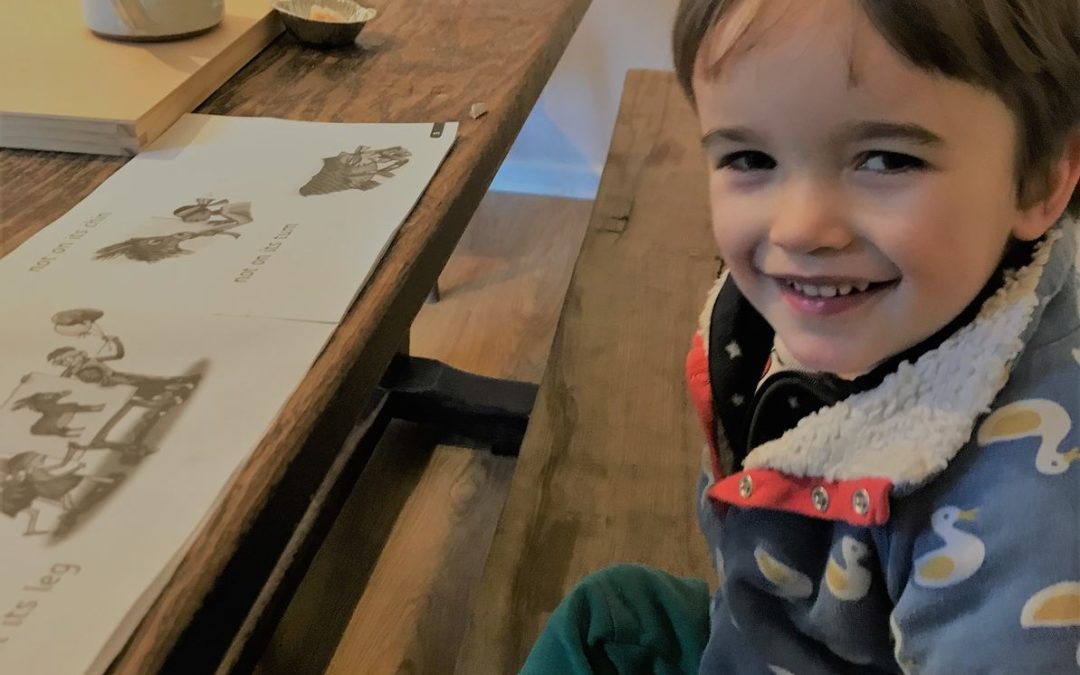Reading is a magical, joyous gift we can share with our children. Fluent literacy opens innumerable doors, to other areas of curriculum, to in depth understanding, to the future. But despite our best efforts, it’s not always easy, or pleasurable, for our children. How can we help our children develop confidence and proficiency in this vital skill, without becoming overbearing?
Sometimes we need reminding that our children are their own people, with their own sense of humour, fears, loves, and reading preferences. I have sat through many a parents evening and been asked, “How can I get my child to read more?” I ask if their child browses websites, or skims through football magazines, or comics, and they say, “Well yes, but he doesn’t read proper books. And he doesn’t read magazines or newspapers from cover to cover.”
Um… well, I don’t read a newspaper from cover to cover. I just pick and choose the stuff I like (Caitlin Moran, things about books and the environment) and skate merrily past the cars, sports and reviews of films I don’t intend to see. And what constitutes a “proper book”?
Loving Books
As a child, I read voraciously, and would spend half the day at school scribbling stories about animals or, as I hit my teens, tragic novels about the First World War where everyone was wiped out by either the war or the flu. Then I’d go home and write another 3000 words. So, I loved reading, and writing, and everything to do with books.
I did not love sport. We had to play lacrosse. Lacrosse is not a game for people who don’t like sport. People come at you, waving very hard sticks, shouting, “BASKET!!!” My general policy was to run very far the other way, and hide, but this was frowned upon.
Imagine if my parents had sat down my PE teacher and said, “Tell me, how can we make our daughter love lacrosse? We want to get her fitter. Perhaps practise every week, and join a county team.”
That would be ludicrous, surely. I walked for miles and rode horses and danced around my best friend’s room to Ace of Base and Corona and was perfectly fit. There was no need to force me into a specific (and, to me, hugely alarming) box. I was quite happy.
How To Put Someone Off Reading
Here are two things not to do! (One of them might come as a bit of a surprise…)
- Reward children for reading. Would you give them a prize for doing something totally normal, like opening a door, or something they naturally enjoy, like playing in the garden? To reward a child for reading suggests that it is in some way a chore to be got through in order to get to the real treat, whereas, in fact, you really want to convey that reading is both part of the fabric of everyday life and, inherently, a joy in itself.*
- Lecture. You don’t want them to think of reading as being like the food they don’t really like but that you’re always trying to get them to eat. Just let them discover it for themselves.
How to Make Reading Positive
The best way to help our children find their way to reading is to create a positive environment around literature and storytelling.
- Make Books Special
Books are awesome, and if you find the right one, there’s something for everyone. So, treat them as precious, to be loved and treasured. Give them as gifts or spend the afternoon relaxing at the library.
- Read In Front Of Your Child
I am working on this. It’s hard to prioritise when life is busy but reading around your child and sharing your enthusiasm (authentically, not in a fake, cringey way which they will spot a mile off) is powerful.
- Add Props
Make story sacks, use cards or pictures as prompts to retell stories in your/their own words. Tell stories of your own with props and toys. Create story boxes.
- Share The Reading
A lot of parents stop doing this as their children get older, partly because life gets so busy, and partly because they mistakenly think they don’t need or want it. Shared reading, where you take it in turns to read a paragraph, or a page, is a great way to keep the momentum going while still giving your child the opportunity to build their fluency and confidence. It’s also a really lovely way to have some quiet quality time together.
- Listen
You don’t need to look at the page to understand a story. I have taught extraordinarily bright dyslexic children who really struggled when faced with a page of text, but grasped Shakespeare’s language before anyone else in the room. Listen to audio books, enjoy trips to the theatre. It can be expensive but there are affordable avenues – local schools often invite audiences to watch their dress rehearsals.
- Respect Your Child’s Choices
It’s hard to let go of our adult ideals, but if they’re interested in space, find books about space. If they want to read all of the Diary of a Wimpy Kid books five times in a row, let them.
- Real Life Reading
In reality, as adults, we don’t just read for pleasure. We read because we need to find out information. Your children can do the same, by reading match reports for their favourite teams, leaflets about a place they’re visiting, choosing a holiday destination or following a recipe.
- Make It a Joyous Experience
Sit down under a cosy blanket, make your favourite warm drink, put some good music on, relax and enjoy.
Follow my blog for thoughts on life, attachment parenting, home education and our attempts at ethically conscious living.
Further Reading If You Fancy It
*Punished By Rewards by Alfie Kohn
https://wordery.com/search?term=punished+by+rewards
https://www.easypeasyandfun.com/story-box-shoe-box-craft/
https://www.thespruce.com/how-to-create-a-story-sack-1244814


Brilliant ideas for fostering a love of reading. My 3 big boys all enjoy reading but one of them has found it more of a struggle. You are so right, we have helped him not with rewards but with stories in bed at night, comics and the freedom to read when and where he likes. I am so proud to say he came rushing home from school on Friday with a copy of The Witches by Roald Dahl and all he wanted to do this weekend was read it!
Wonderful!
I love a good read, great post!
Thank you, Lisa!
Great piece, my eldest took a very long time to find his love of reading.. we did all the wrong things, pushing to read, rewards and making him read before he could do what he wanted! But one day something just clicked, I think he found a book he just loved (Tom Gates) and that was it, he reads and reads and reads now!
Amazing how it just clicks, isn’t it? Tom Gates is fab!